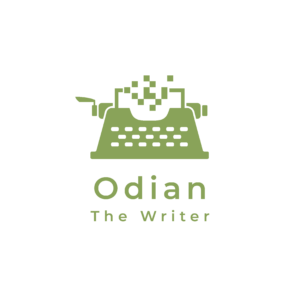The Ultimate Guide to Writing Must-Read Books on Espionage: Expert Tips and Techniques
odianthewriter
February 16, 2025

Step into the captivating world of writing espionage with expert guidance from seasoned authors. This ultimate guide reveals the secrets to crafting must-read spy novels and true espionage stories. Whether you’re a new writer or a dedicated espionage enthusiast, you’ll find valuable tips, techniques, and recommendations to enhance your storytelling.
In this guide, you will learn how to create compelling characters, develop intricate plots, and build suspense. Each element will keep readers hooked from the first page to the last. Whether you want to explore Cold War espionage, uncover government secrets, or navigate international spy networks, this resource covers it all.
With insights from renowned authors and industry experts, this guide distills years of experience into actionable advice. You will master everything from thorough research to realistic settings and the psychology of spies. These strategies will elevate your writing and bring authenticity to your stories.
Now is the time to unlock your inner spy novelist. Embark on an exciting literary journey, and start crafting stories filled with espionage, betrayal, and covert operations. Are you ready to captivate your readers like never before?
“Great espionage novels don’t just tell a story—they immerse readers in a world of secrets, deception, and high-stakes intrigue. Master the art of crafting must-read thrillers with expert techniques that keep readers hooked from the first page to the last.”
– Odian Levy
Understanding the Genre of Writing Espionage Novels
Espionage novels hold a unique place within thriller literature. They revolve around spies, intelligence agencies, and the intricate web of secrecy that shapes international relations. At their core, these stories examine moral dilemmas, the psychological toll of espionage, and the cost of betrayal. To truly understand this genre, you must explore its history, themes, and cultural impact.
Over the years, espionage fiction has evolved dramatically. Classic authors like John le Carré and Ian Fleming focused on Cold War tensions, where global stakes intensified personal conflicts. Today, modern espionage stories weave in cyber warfare, terrorism, and geopolitical complexities. This shift reflects the ever-changing world of intelligence and the new threats societies face.
When writing espionage fiction, understanding genre conventions is essential. Readers expect intrigue, plot twists, and complex moral choices. The protagonist is often a flawed hero navigating deception and danger. Settings range from dark European alleyways to cutting-edge intelligence hubs. By mastering the genre’s history and key elements, you’ll build a strong foundation for your own writing espionage novel.
Researching for Your Writing Espionage Book
Research is the foundation of a compelling espionage novel. Since the world of spies is full of intricate details, thorough research is essential for authenticity. This includes studying historical events, military strategies, and intelligence operations. By understanding espionage history, you can draw meaningful parallels between past and present conflicts, adding depth to your story.
Beyond history, writers must explore the technical side of espionage. This means learning about surveillance techniques, cryptography, and intelligence gathering. Resources like books, documentaries, and interviews with former intelligence officers can offer valuable insights. Additionally, keeping up with current events and technological advancements will make your story feel timely and realistic.
While accuracy is important, balancing fact with creative storytelling is key. Writers must decide where to stay true to reality and where to take creative liberties. Sometimes, bending the facts slightly can enhance engagement without sacrificing credibility. However, every detail should still feel plausible within the world of espionage, ensuring readers stay immersed in the story.
Developing Compelling Characters in Writing Espionage Novels
Creating compelling characters is essential for a successful espionage novel. Through them, readers experience the world of spies, making character development crucial to engagement. A strong protagonist, often a spy or intelligence officer, should reflect the complexities of their profession. They may struggle with moral dilemmas, personal sacrifices, and a life of secrecy.
Beyond the protagonist, secondary characters enrich the story. These can include allies, adversaries, and double agents, each adding intrigue and tension. Every character should have distinct motivations, backgrounds, and relationships that shape their actions. The interplay between them drives the plot forward, often leading to unexpected twists.
Understanding your characters’ psychology is just as important. Many spies develop paranoia, trust issues, or existential crises due to their experiences. Exploring their backstories, motivations, and hidden vulnerabilities makes them more relatable and emotionally engaging. By investing in deep character development, you create a cast that resonates with readers and elevates your espionage story.
Creating a Captivating Plot in Writing Espionage Stories
A gripping plot is the heartbeat of any espionage novel. It keeps readers engaged and eager to turn the pages. Most plots center around a high-stakes mission or a race against time. To add depth, intertwine this conflict with subplots that explore the protagonist’s personal and professional struggles. This contrast enriches the reading experience.
Effective plot structure is also crucial. The three-act structure works well in espionage fiction. In the first act, introduce your protagonist, their world, and the central conflict. The second act should raise the stakes, presenting obstacles that test their resolve and ingenuity. Finally, the third act delivers a satisfying resolution, often with a twist that surprises both characters and readers.
Plot twists are a hallmark of espionage literature. They should be carefully planted so that the payoff feels both earned and unexpected. Using foreshadowing helps build anticipation, dropping subtle hints while keeping readers guessing. With a well-paced, layered narrative, you can craft an espionage story that captivates and thrills your audience.
Mastering the Art of Suspense and Tension in Writing Espionage
Suspense and tension are the lifeblood of espionage writing, essential for keeping readers on the edge of their seats. To master this craft, writers must understand the delicate balance between revealing information and withholding it. The strategic use of pacing is critical here; moments of high tension can be interspersed with quieter scenes that allow readers to catch their breath. However, these quieter moments should still maintain an underlying sense of unease, reminding readers that danger lurks just beneath the surface.
Building suspense often involves creating stakes that feel personal and immediate. When readers are emotionally invested in your characters, they will feel the tension of their predicaments more acutely. This can be achieved by placing characters in life-or-death situations or forcing them to confront their deepest fears. Additionally, employing cliffhangers at the end of chapters can compel readers to keep turning the pages, eager to discover what happens next.
Another technique for enhancing suspense is the use of misdirection. In espionage narratives, where betrayal and deception are commonplace, leading readers down one path while secretly setting up another can create a thrilling reading experience. This might involve introducing red herrings or unreliable narrators who distort the truth. By carefully orchestrating these elements, you can create a narrative that keeps readers guessing until the very last moment, making your espionage novel a true page-turner.
Incorporating Technology and Gadgets in Writing Espionage Stories
Technology plays a critical role in modern espionage. From surveillance drones to encrypted communications, these tools add authenticity and excitement to your story. However, balance is key. Technology should enhance the plot without overshadowing the narrative or character development.
Researching real-world advancements can spark ideas for your novel. Understanding hacking techniques, surveillance methods, and intelligence operations makes your story feel grounded. Ethical dilemmas also add depth. How does technology affect personal privacy? What are the moral consequences of using advanced intelligence tools? Exploring these questions creates thought-provoking themes.
Your gadgets should also fit the character and tone of the story. A seasoned spy may rely on cutting-edge tech, while a field agent might favor old-school tactics. Thoughtfully weaving technology into your plot heightens tension and intrigue. It should serve the story, not distract from it. When done well, tech-driven espionage adds a layer of realism and suspense that keeps readers hooked.
Writing Action-Packed Scenes in Writing Espionage Novels
Action scenes are a hallmark of espionage novels, offering a thrilling contrast to the genre’s more cerebral elements. Writing them requires a strong grasp of pacing, clarity, and physical movement. Whether it’s a high-speed chase through a crowded city or a tense standoff in a secluded hideout, these scenes should immerse readers in the moment and evoke a visceral reaction.
To make action sequences effective, maintain a brisk pace that matches the intensity of the scene. Short, punchy sentences heighten urgency, while well-placed descriptions paint a vivid picture without overwhelming the reader. However, clarity is crucial. Readers should easily follow the action without getting lost in excessive or convoluted details.
Beyond the physical movement, ground action in emotion. Readers should feel the protagonist’s adrenaline, fear, and determination. The rush of combat, the dread of impending danger, and the thrill of survival add emotional weight to the scene. By weaving these elements together, you create action that is both gripping and deeply engaging. A well-crafted action sequence elevates your espionage novel, keeping readers hooked and eager for more.
Editing and Revising Your Writing Espionage Manuscript for Publication
Once you finish your espionage manuscript, the real work begins—editing and revision. This stage transforms a rough draft into a polished, publication-ready novel. Start by stepping back. Distance helps you spot weak areas, whether it’s plot inconsistencies, character development issues, or pacing problems.
During editing, seek feedback from beta readers or a critique group. Their insights can highlight what works and what needs refinement. Stay open to constructive criticism—it’s a powerful tool for growth. Small adjustments can strengthen your narrative and enhance reader engagement.
When you’re confident in your revisions, consider hiring a professional editor. A genre-specialized editor brings a fresh perspective and ensures your manuscript meets industry standards. They can help with structural edits, pacing improvements, and proofreading, refining your novel to captivate readers. Committing to thorough editing and revision will elevate your work and boost its chances of success in the competitive literary market.

Odian Levy
is a thriller author known for crafting high-tech espionage stories filled with intense action, deep conspiracies, and cutting-edge technology. His novel Hummingbird delivers a gripping tale of covert missions, betrayal, and the fight for survival in a world of hidden agendas.



